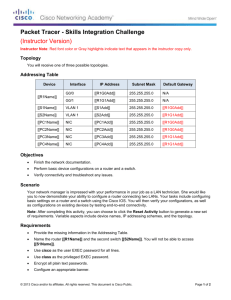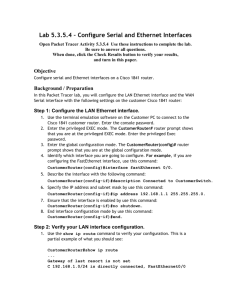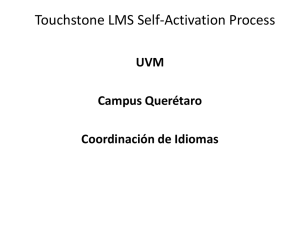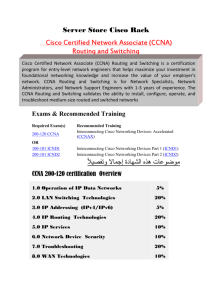640-822
advertisement
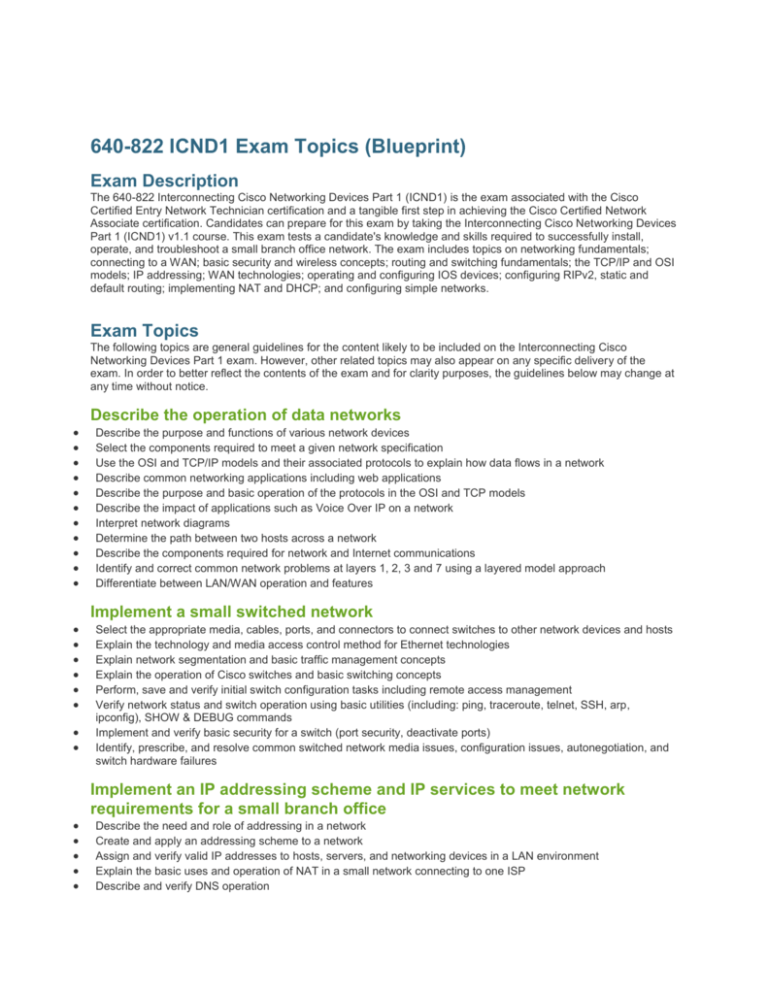
640-822 ICND1 Exam Topics (Blueprint) Exam Description The 640-822 Interconnecting Cisco Networking Devices Part 1 (ICND1) is the exam associated with the Cisco Certified Entry Network Technician certification and a tangible first step in achieving the Cisco Certified Network Associate certification. Candidates can prepare for this exam by taking the Interconnecting Cisco Networking Devices Part 1 (ICND1) v1.1 course. This exam tests a candidate's knowledge and skills required to successfully install, operate, and troubleshoot a small branch office network. The exam includes topics on networking fundamentals; connecting to a WAN; basic security and wireless concepts; routing and switching fundamentals; the TCP/IP and OSI models; IP addressing; WAN technologies; operating and configuring IOS devices; configuring RIPv2, static and default routing; implementing NAT and DHCP; and configuring simple networks. Exam Topics The following topics are general guidelines for the content likely to be included on the Interconnecting Cisco Networking Devices Part 1 exam. However, other related topics may also appear on any specific delivery of the exam. In order to better reflect the contents of the exam and for clarity purposes, the guidelines below may change at any time without notice. Describe the operation of data networks Describe the purpose and functions of various network devices Select the components required to meet a given network specification Use the OSI and TCP/IP models and their associated protocols to explain how data flows in a network Describe common networking applications including web applications Describe the purpose and basic operation of the protocols in the OSI and TCP models Describe the impact of applications such as Voice Over IP on a network Interpret network diagrams Determine the path between two hosts across a network Describe the components required for network and Internet communications Identify and correct common network problems at layers 1, 2, 3 and 7 using a layered model approach Differentiate between LAN/WAN operation and features Implement a small switched network Select the appropriate media, cables, ports, and connectors to connect switches to other network devices and hosts Explain the technology and media access control method for Ethernet technologies Explain network segmentation and basic traffic management concepts Explain the operation of Cisco switches and basic switching concepts Perform, save and verify initial switch configuration tasks including remote access management Verify network status and switch operation using basic utilities (including: ping, traceroute, telnet, SSH, arp, ipconfig), SHOW & DEBUG commands Implement and verify basic security for a switch (port security, deactivate ports) Identify, prescribe, and resolve common switched network media issues, configuration issues, autonegotiation, and switch hardware failures Implement an IP addressing scheme and IP services to meet network requirements for a small branch office Describe the need and role of addressing in a network Create and apply an addressing scheme to a network Assign and verify valid IP addresses to hosts, servers, and networking devices in a LAN environment Explain the basic uses and operation of NAT in a small network connecting to one ISP Describe and verify DNS operation Describe the operation and benefits of using private and public IP addressing Enable NAT for a small network with a single ISP and connection using SDM and verify operation using CLI and ping Configure, verify and troubleshoot DHCP and DNS operation on a router (using both CLI and SDM) Implement static and dynamic addressing services for hosts in a LAN environment Identify and correct IP addressing issues Implement a small routed network Describe basic routing concepts (including: packet forwarding, router lookup process) Describe the operation of Cisco routers (including: router bootup process, POST, router components) Select the appropriate media, cables, ports, and connectors to connect routers to other network devices and hosts Configure, verify, and troubleshoot RIPv2 Access and utilize the router CLI to set basic parameters Connect, configure, and verify the operational status of a device interface Verify device configuration and network connectivity using ping, traceroute, telnet, SSH or other utilities Perform and verify routing configuration tasks for a static or default route given specific routing requirements Manage IOS configuration files (including: save, edit, upgrade, restore) Manage Cisco IOS Implement password and physical security Verify network status and router operation using basic utilities (including: ping, traceroute, telnet, SSH, arp, ipconfig), SHOW & DEBUG commands Explain and select the appropriate administrative tasks required for a WLAN Describe standards associated with wireless media (including: IEEE WI-FI Alliance, ITU/FCC) Identify and describe the purpose of the components in a small wireless network. (including: SSID, BSS, ESS) Identify the basic parameters to configure on a wireless network to ensure that devices connect to the correct access point Compare and contrast wireless security features and capabilities of WPA security (including: open, WEP, WPA-1/2) Identify common issues with implementing wireless networks Identify security threats to a network and describe general methods to mitigate those threats Explain today's increasing network security threats and the need to implement a comprehensive security policy to mitigate the threats Explain general methods to mitigate common security threats to network devices, hosts, and applications Describe the functions of common security appliances and applications Describe security recommended practices including initial steps to secure network devices Implement and verify WAN links Describe different methods for connecting to a WAN Configure and verify a basic WAN serial connection
